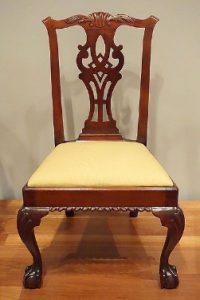 Fig. 1: Side chair, De Young Museum: Fine Arts Museum of San Francisco (San Francisco, California) via Wikimedia Commons.
Fig. 1: Side chair, De Young Museum: Fine Arts Museum of San Francisco (San Francisco, California) via Wikimedia Commons.
The Research Services team at NEHGS is occasionally approached with questions relating to the history of ownership (i.e. provenance) of a particular family heirloom. These questions are usually supplemented with stories about the heirloom’s first owner and how the object was acquired. Genealogists are uniquely qualified to carry out provenance research due to their familiarity with and frequent use of two sources commonly used in provenance research: wills and estate inventories. However, before consulting any of these sources, a serious study of an heirloom’s provenance should begin by studying the object itself.
To illustrate how the study of an object is crucial to provenance research, consider the following hypothetical scenario: An individual is interested in documenting the ownership of a piece of heirloom furniture (a side chair) that has been in the family for multiple generations. For the purpose of this exercise, let’s say that the chair is similar in form to the image in Fig. 1, and that the chair is not a reproduction. According to family tradition, the chair was purchased by a distant ancestor (John Brown) from a Boston furniture maker. John Brown died in the Boston area in 1720.
Before jumping to probate records, two questions should be asked. First, can we know when the side chair was constructed and when the style of the chair was common? Second, does the date of construction and the style of the chair correspond with the period when John Brown was living? Answering these questions will be greatly aided by consulting reference works that address early American furniture forms and styles. Two useful reference works are listed below. While the first volume discusses furniture exclusively, the second provides a broad overview of the major stylistic changes in American decorative arts using examples of furniture, silver, ceramics, textiles, and paintings:
- Jonathan L. Fairbanks and Elizabeth Bidwell Bates, American Furniture: 1620 to the Present (New York: Richard Marek Publishers, 1981)
- Pauline K. Eversmann, The Winterthur Guide to Recognizing Styles: American Decorative Arts from the 17th through 19th Centuries (Winterthur, Delaware: Henry Francis du Pont Winterthur Museum, 2001)
Utilizing the above works will help one to learn that the side chair under consideration is of the Chippendale style. The ball-and-claw feet, the decorative pierced splat (or back) of the chair, along with the carving on the legs, seat edge, and top of the chair back are characteristic of the opulent Chippendale style.[1] The form was common in American between the years 1755 and 1790 – several decades after John Brown’s death in 1720.[2] Several different styles preceded the Chippendale style in America, including the Seventeenth-Century style (1620–1680), the William and Mary style (1680–1720), and the Queen Anne style (1720–1755), each of which possessed its own unique characteristics.[3]
Given this information, it seems unlikely that the side chair was acquired by the individual’s ancestor, John Brown. If the chair was acquired by John Brown, we would expect the chair to exhibit characteristics of the Seventeenth-Century style or William and Mary style. However, based on the Chippendale style of the chair, it is more likely that it was acquired by one of John Brown’s children or grandchildren. More research time might therefore be allocated towards researching the descendants of John Brown and locating their respective probate inventories. Additional research might also be dedicated to researching if the chair was in fact made in Boston.
Overall, when researching a family heirloom, consider setting aside some initial time to research the object itself. Doing so will allow you – in some instances – to partly verify or question the history of ownership of a particular object. As in the above example, researching an object first might prevent you from performing fruitless searches and allow you to direct your research in a new direction.
Notes
[1] For additional information on American Chippendale furniture and the Chippendale style, see Fairbanks and Bates, American Furniture: 1620 to the Present, 139–94, and Eversmann, The Winterthur Guide to Recognizing Styles, 53–64.
[2] Eversmann, The Winterthur Guide to Recognizing Styles, 53.
[3] Ibid., 17–51.
Share this:

About Dan Sousa
Dan Sousa currently serves as the Decorative Arts Trust Curatorial Intern at Historic Deerfield, Inc.—a museum in Deerfield, Massachusetts—where he is involved in several research, exhibition, and publication projects. His research interests include early American history and material culture, Massachusetts history and genealogy, Boston history and genealogy, and the history of American Catholicism. He holds a B.A. in history from Providence College and an M.A. in history from the University of Massachusetts, Boston.View all posts by Dan Sousa →